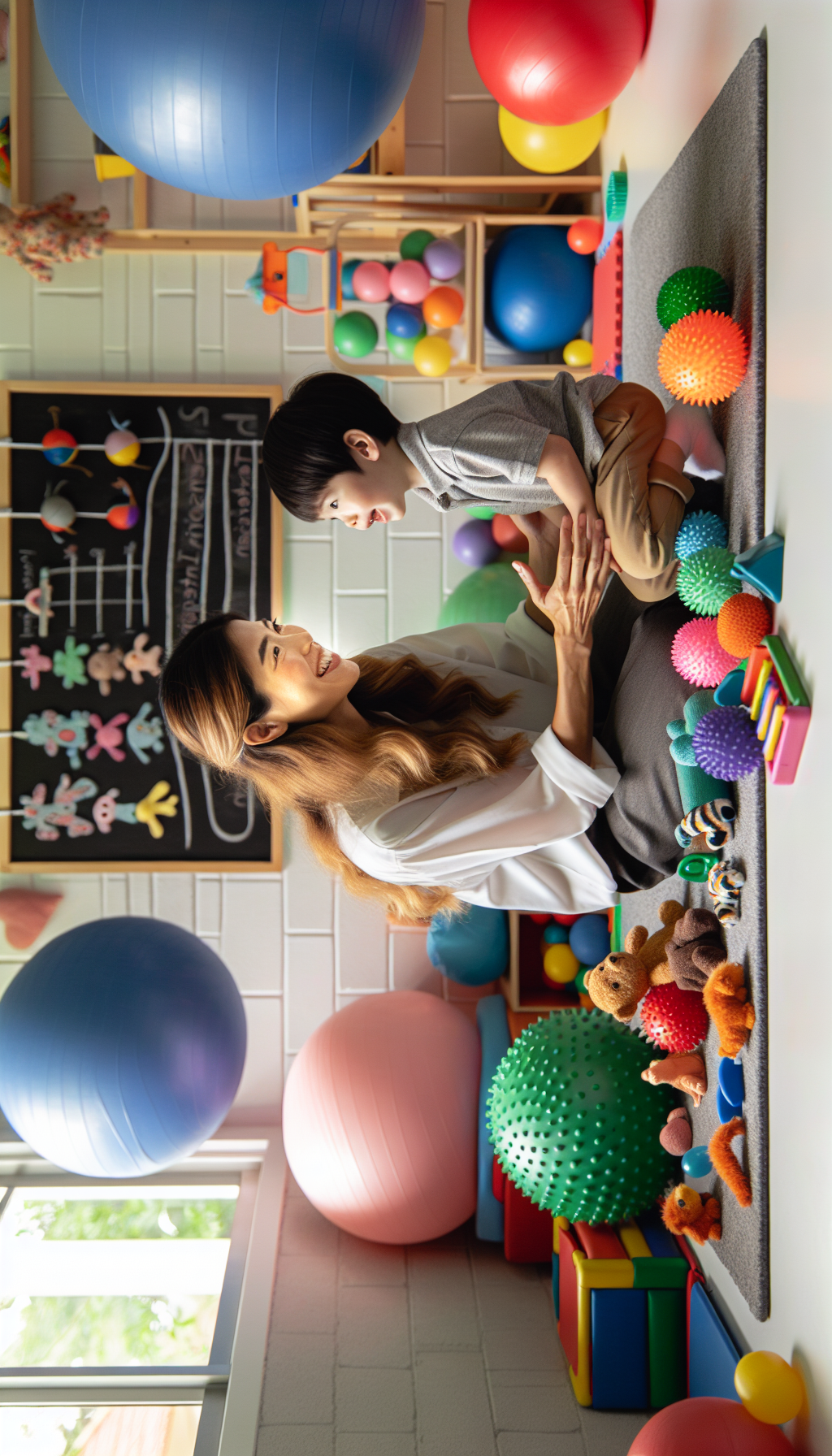Sensory integration plays a crucial role in how we perceive the world and respond to it. For individuals, particularly children, who struggle with sensory processing issues, these challenges can greatly impact their communication skills. Speech therapy that incorporates sensory integration approaches can significantly improve the ability to process and respond to sensory information, thereby enhancing communication and language development.
Understanding Sensory Integration in Speech Therapy
Sensory integration is the process by which the brain organizes and interprets sensory information from our environment, allowing us to respond appropriately in various situations. When sensory processing is not well-integrated, it can lead to difficulties in speech and language development, social interactions, and academic performance.
Children with sensory processing disorders or those on the autism spectrum often experience hypersensitivities or hyposensitivities to sensory inputs, which can be overwhelming or insufficiently stimulating. Sensory integration approaches in speech therapy aim to address these sensitivities by creating therapy sessions that are tailored to each child’s unique sensory needs, thus providing a supportive environment for learning and communication.
Sensory Strategies for Speech Therapy
Incorporating sensory strategies into speech therapy involves the use of various techniques and activities designed to regulate the child’s sensory system. This can help children become more engaged and attentive, making it easier for them to focus on speech and language tasks. Here are some strategies that speech therapists might employ:
-
Tactile Activities: Using different textures can help desensitize or stimulate the tactile system. For example, therapists may use play dough, sand, or rice bins to encourage children to explore and express themselves verbally.
-
Vestibular and Proprioceptive Input: Swings, trampolines, and therapy balls can be used to provide movement and deep pressure inputs that help regulate the child’s sensory system, improving their attention and ability to participate in speech therapy activities.
-
Auditory Supports: For those with auditory processing challenges, using sound-absorbing materials in the therapy room, headphones with calming music, or white noise machines can help minimize distractions.
-
Visual Supports: Dimming lights or using colored overlays can help reduce visual overwhelm for some children, making it easier for them to focus on speech therapy tasks.
Integrating Sensory and Speech Interventions
Speech therapists often integrate sensory-based interventions within their sessions to support the overall goals of therapy. For instance, a child who is working on articulation might practice speech sounds while engaging in a tactile activity that is calming and organizing for their sensory system. This dual approach can lead to more effective learning and generalization of skills.
The Role of Sensory Integration in Language Development
Sensory experiences are foundational for language development. They provide the context in which children learn new words and concepts. For example, experiencing the softness of a blanket or the taste of sweet strawberries gives meaning to descriptive language. Speech therapists can create sensory-rich environments to support language development, using real-life experiences and play-based activities.
Case Studies and Advanced Techniques
Speech therapists often share case studies demonstrating the effectiveness of sensory integration in speech therapy. These may include stories of children who have made significant progress in their communication skills after therapists addressed their underlying sensory processing challenges.
Advanced techniques in sensory integration may involve the use of specialized equipment, such as sensory swings or weighted vests, or more nuanced approaches like the Wilbarger Protocol, which involves a therapeutic brushing technique. These interventions often require additional training and expertise but can have a profound impact on a child’s ability to engage in speech therapy.
Collaborative Efforts to Support Sensory Integration
Collaboration between speech therapists, occupational therapists, and other professionals is essential to address the complex needs of children with sensory integration challenges. Occupational therapists are particularly skilled in assessing and providing interventions for sensory processing issues, and their insights can be invaluable in creating a comprehensive therapy plan.
Speech therapists may also work with parents and teachers to ensure that sensory strategies are consistently implemented across different environments, such as at home and in school. This collaborative approach ensures that children receive the support they need to succeed in all areas of their development.
Research and Continuing Education
Speech therapists must stay abreast of the latest research in sensory integration to provide evidence-based interventions. This may involve attending workshops, conferences, or pursuing additional certifications in sensory integration approaches.
Continued education ensures that therapists are using the most effective techniques and adapting their methods to meet the evolving needs of their clients. It also fosters a deeper understanding of the interplay between sensory processing and speech and language development.
Conclusion
Sensory integration approaches in speech therapy offer a holistic way to support children with sensory processing challenges. By addressing the underlying sensory needs, speech therapists can create an optimal environment for communication and language development. With ongoing research and collaboration among professionals, sensory integration will continue to evolve, providing enhanced strategies for supporting children’s speech and language needs.
Incorporating sensory integration into speech therapy requires a thoughtful and individualized approach, but the potential benefits for children’s communication and overall development are significant. As we continue to understand more about sensory processing and its impact on speech and language, we can expect to see further advancements in the strategies used within therapeutic settings.



